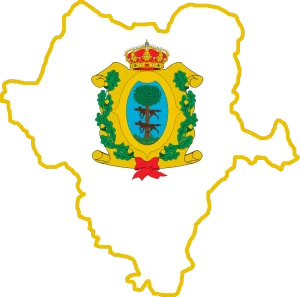Geographical Position and Climate of Durango
Durango, officially known as Victoria de Durango and also the Free and Sovereign State of Durango, is one of the 31 states which, along with Mexico City, comprise the 32 Federal Entities of Mexico. Durango is bordered by Chihuahua to the north, Coahuila and Zacatecas to the east, Nayarit to the south, and Sinaloa to the west.
The climate in the state varies significantly due to its diverse topography, which includes mountains, valleys, and semi-desert areas. Overall, Durango’s climate can range from arid to semi-arid and temperate, with precipitation varying greatly depending on the region and altitude.
Best time to visit Durango
The ideal time to visit the state depends on the activities you’re interested in and the regions of the state you plan to explore. Here are some general recommendations:
- Spring (April to June): The weather is pleasant with moderate temperatures. It makes it a great time for outdoor activities like hiking and exploring the natural landscapes.
- Summer (July to September): While it can be hot, this is also the rainy season, which brings cooler temperatures after showers and makes the countryside lush and green. It’s a good time for those who enjoy nature and don’t mind occasional rain.
- Fall (October to November): With the end of the rainy season, the weather is mild and the fall colors in the mountainous areas are beautiful. This is an excellent time for sightseeing and cultural events.
- Winter (December to February): Winters can be cold, especially in the mountains, but if you enjoy winter sports like skiing at the Pueblo Nuevo or La Rosilla, this would be the time to go.
It’s advisable to avoid the peak summer months if you’re not accustomed to high temperatures, particularly in the lower elevations and semi-desert areas. Additionally, if you’re planning to visit the mountainous regions, late spring or early fall would be perfect, as the weather is mild and the landscapes are particularly striking.
Travel to Durango
By Air
- Durango International Airport (General Guadalupe Victoria International Airport): The airport serves the capital, Durango City. With flights from major Mexican cities and some international destinations.
With car & bus
- Driving: If you’re coming from within Mexico or from the United States, Durango is accessible via a network of highways. Notable routes include Federal Highways 40 and 45.
- Bus: Various bus lines operate services to Durango from many cities across Mexico. The state has a well-developed road system, making bus travel a viable option.
By Rail
- While passenger train services are limited in Mexico, there is a rail network for cargo. Some tourists opt for scenic train tours that pass through parts of northern Mexico, but these do not typically include stops in Durago.
Tips for Travelers
- Documentation: Ensure you have the proper documentation, such as a passport and visa if required, especially when entering from the United States.
- Travel Insurance: It’s advisable to get travel insurance that covers your trip to Mexico.
- Car Rental: Renting a car can be a convenient way to explore Durango, especially if you plan to visit multiple locations within the state.
Places to visit

Important Information
Capital – Victoria de Durango
Largest City – Victoria de Durango
Territory – 123,317 km2
Population – 1,832,650
Time Zone – UTC-6 (CST)
